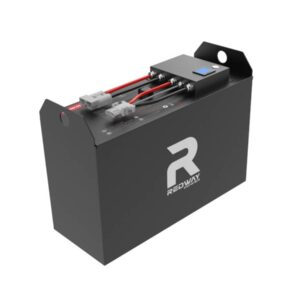Do I need a SDS for lithium batteries?
Safety Data Sheets (SDS) are mandatory for lithium batteries in most commercial and industrial contexts. Lithium batteries contain hazardous chemical components (e.g., electrolytes, lithium salts) that require detailed safety documentation under global regulations like OSHA Hazard Communication Standard and GHS. SDS provides critical information on handling, storage, and emergency measures for thermal runaway or leakage risks. Exceptions may apply to small consumer cells (e.g., CR2032) in retail packaging, but manufacturers and distributors must provide SDS upon request for workplace safety compliance.
Forklift Battery Maintenance Checklist Essentials
When is an SDS legally required for lithium batteries?
Legally mandated SDS applies when lithium batteries are classified as hazardous chemicals under transport or workplace safety laws. For example, lithium-ion packs exceeding 100Wh capacity or containing ≥1g of lithium metal per cell typically require SDS. Pro Tip: Always verify regional regulations—UN38.3 certification alone doesn’t exempt SDS obligations for bulk shipments.

Transportation authorities like DOT and IATA require SDS for lithium batteries shipped as dangerous goods. This documentation must detail flammability risks (Class 9 hazard), emergency response protocols, and first-aid measures. For workplaces, OSHA mandates SDS availability if batteries pose health risks during handling or disposal. A real-world example: A 20kWh lithium forklift battery installation requires SDS access for employees under 29 CFR 1910.1200. Transitionally, while small consumer batteries (e.g., AA Li-SOCl₂) might not need SDS in retail, bulk industrial suppliers must comply. Did you know? Misclassifying lithium polymer batteries as non-hazardous can incur fines up to $70,000 per violation under U.S. regulations.
What key details must a lithium battery SDS include?
Critical SDS sections for lithium batteries include composition/chemical data, fire-fighting measures, and disposal guidelines. Specifics like electrolyte solvents (e.g., LiPF6 in EC/DMC) and thermal runaway thresholds must be explicitly stated to meet GHS standards.
A compliant SDS must outline first-response actions for battery incidents, including how to handle ruptured cells releasing HF gas. For instance, it should specify PPE requirements (nitrile gloves, face shields) and neutralization agents (calcium gluconate gel for skin exposure). Practically speaking, thermal management data is vital—lithium batteries require fire suppression systems using Class D extinguishers instead of water. Pro Tip: Ensure SDS lists all hazardous decomposition products, as overheated Li-ion cells emit toxic CO and HF. A comparative example: While lead-acid battery SDS focuses on sulfuric acid exposure, lithium versions emphasize fire risks and voltage-specific hazards.
| Required Section | Lithium Battery Focus |
|---|---|
| Section 9: Physical Properties | Nominal voltage, energy density (Wh/kg) |
| Section 10: Stability | Thermal runaway onset temperature (~150°C for NMC) |
How do SDS requirements vary by battery type?
SDS variations depend on lithium chemistry and application. LiFePO4 batteries require different hazard communication than NMC or LCO types due to varying thermal stability and decomposition products. High-power EV packs demand more detailed fire risks than small consumer cells.
For example, lithium-metal primary batteries (e.g., CR2032) need SDS sections addressing metallic lithium’s water reactivity, while Li-ion rechargeables focus on electrolyte flammability. Industrial storage systems over 25kWh often require supplemental SDS appendices detailing ventilation requirements and arc-flash risks. Transitionally, manufacturers must update SDS when modifying cell chemistry—a 10% increase in nickel content in NMC cathodes could alter toxic fume profiles. Did you realize? Medical device batteries require FDA-aligned SDS with biocompatibility data absent from industrial versions.
| Battery Type | SDS Emphasis |
|---|---|
| Li-ion (NMC) | Thermal runaway propagation, CO emission |
| LiFePO4 | Phosphorus-containing smoke, higher thermal cutoff |
Battery Expert Insight
FAQs
Are SDS required for installed lithium battery systems?
Yes, permanently installed systems like solar storage still require SDS accessibility. OSHA mandates on-site SDS availability for maintenance staff exposed to battery chemicals during servicing.
Do pre-assembled consumer devices need separate SDS?
Generally no for end-users, but OEMs must provide SDS to repair centers. Exception: EU batteries >500g require SDS-like info sheets under CLP Regulation.
